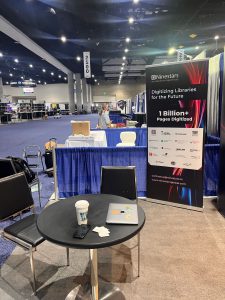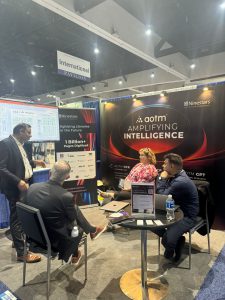Today, information flows at an unprecedented rate, creating an overwhelming deluge of data. Just consider this staggering fact: we produce as much information every two days as was generated from the dawn of civilization until 2003! In such a chaotic landscape, how can organizations hope to navigate the endless stream of data and stay relevant?
For example, how do brands track their media presence which impacts their reputation and competitiveness?
Enter media clipping services. These specialized services act as lifelines, helping businesses sift through the noise to effectively monitor their media presence. In an era where reputation management is crucial, understanding the significance of these services is more than just helpful—it’s essential.
What Are Media Clipping Services?
With companies facing scrutiny from both consumers and the media, the ability to track mentions, sentiment, and trends across various platforms can be the difference between thriving and merely surviving.
Media clipping services, also known as media monitoring or press clipping services, provide organizations with tools to track mentions of their brand, products, or relevant topics across various media platforms. This includes traditional media such as newspapers and magazines, as well as online platforms like blogs, forums, and social media channels. By aggregating these mentions, organizations can gain insights into public perception, media sentiment, and industry trends.
By streamlining media monitoring, these services enable organizations to focus on what truly matters: building meaningful connections with their stakeholders and shaping their narrative in the digital age.
A Historical Perspective
The roots of media clipping services goes back to the mid-19th century when articles from newspapers were manually cut and filed to keep track of media coverage. Henry Romeike is credited with founding one of the first press clipping agencies in London in 1851. As media evolved, these services expanded to include radio and television monitoring by the 20th century.
With the advent of the internet, media clipping services transformed dramatically. The introduction of digital platforms allowed for more efficient tracking and analysis of media mentions. Companies began to use software and algorithms to automate the process, enabling them to gather vast amounts of data quickly and accurately. In the early days, human labour was essential for clipping articles but today advanced AI algorithms can scan thousands of articles and social media posts in seconds, making the process incredibly efficient.
Why Media Clipping Services Are Still Relevant in 2024
Real-Time Monitoring: In today’s fast-paced media landscape, real-time insights are invaluable. Media clipping services provide instant alerts whenever a brand is mentioned, allowing organizations to respond quickly to both positive and negative coverage. Modern clipping services can monitor international media, providing companies with insights into their global presence. This capability is essential for businesses operating in diverse markets and regions, allowing them to tailor their strategies based on local sentiment and media coverage.
Comprehensive Coverage: With countless articles, social media posts, and online discussions published daily, tracking mentions manually is impractical. Modern media clipping services can monitor global media, providing companies with insights into their worldwide presence. This capability is essential for businesses operating in multiple markets, allowing them to tailor strategies based on local sentiment and media coverage.
Data-Driven Decision Making: Media clipping services often offer analytics by analyzing trends, audience sentiment, and engagement metrics, helping businesses refine PR strategies and campaigns. AI-driven tools can analyze sentiment and detect trends, providing organizations with a deeper understanding of public perception. This not only enhances the efficiency of monitoring but also enriches the quality of insights gained from media data.
Competitor Analysis: Monitoring competitors’ media mentions allows organizations to stay informed about updates, trends and best practices. Understanding how competitors are portrayed in the media can provide valuable insights for strategic planning.
Crisis Management: In an era where negative publicity can spread like wildfire, media clipping services are essential for effective crisis management. They help organizations identify potential issues early and respond appropriately, safeguarding their reputation.
Social Listening: Beyond traditional media, modern clipping services monitor social media platforms, capturing mentions that might otherwise be missed. This is crucial for understanding real-time public sentiment and responding to customer concerns promptly.
Influencer Tracking: Identifying and engaging with influencers can be a powerful strategy. Media clipping services can help track mentions of a brand by influencers, providing opportunities for partnerships and collaborations.
Language Diversity: For businesses operating in multilingual markets, media clipping services that can monitor across multiple languages are essential. This ensures that no mentions, regardless of language, go unnoticed.
Benchmarking: Comparing a brand’s media coverage to industry benchmarks can provide valuable insights into performance. Clipping services can help set benchmarks and track progress over time.
Sentiment Analysis: Advanced sentiment analysis tools can provide a nuanced understanding of public opinion, going beyond simple positive or negative sentiment. This can help identify areas of concern and opportunities for improvement.
Content Optimization: Analyzing media coverage can help identify topics and keywords that resonate with audiences. This information can be used to optimize content creation and distribution strategies.
Brand Reputation Management: Clipping services can help monitor brand reputation and identify potential threats to it. By addressing negative sentiment and proactively managing online reputation, businesses can protect their brand image.
Investor Relations: Media coverage can impact a company’s stock price. Clipping services can help track media mentions related to financial performance and investor sentiment.
Customer Experience: Analyzing media mentions can provide insights into customer experiences and satisfaction. This information can be used to identify areas for improvement and enhance customer service.
Regulatory Compliance: For industries with strict regulatory requirements, media clipping services can help monitor compliance-related news and ensure that the company is adhering to all relevant regulations.
A Growing Industry
The media monitoring industry is thriving, with the rising importance of brand reputation and the need for companies to stay informed in an increasingly complex media landscape. The ability to adapt and innovate is crucial as businesses seek to navigate the challenges posed by rapid technological advancements and evolving consumer behaviours. The media clipping services provide organizations with the tools needed to monitor their media presence, analyze public sentiment, and make informed decisions.
Ninestars’ Media Clipping Services
Unlock the power of effective media clipping with Ninestars. It’s time to streamline operations, boost efficiency, and gain deeper insights.
With over two decades of experience, we specialize in transforming your data into actionable insights, delivering unmatched quality, speed, and expertise. Whether you’re a growing agency or a seasoned enterprise, our intelligent, technology-driven processes can deliver up to 100,000 pages daily, ensuring you receive the highest quality media coverage tailored to your business needs.
Our client-centric approach means we align with your vision, providing live dashboards, custom reports, and scalable support in 36 languages. Let us handle the heavy lifting—delivering relevant data on time—so you can focus on creating exceptional value for your clients.
Partner with Ninestars today and elevate your media monitoring portfolio. Contact us to learn how we can help you focus on what truly matters.


























